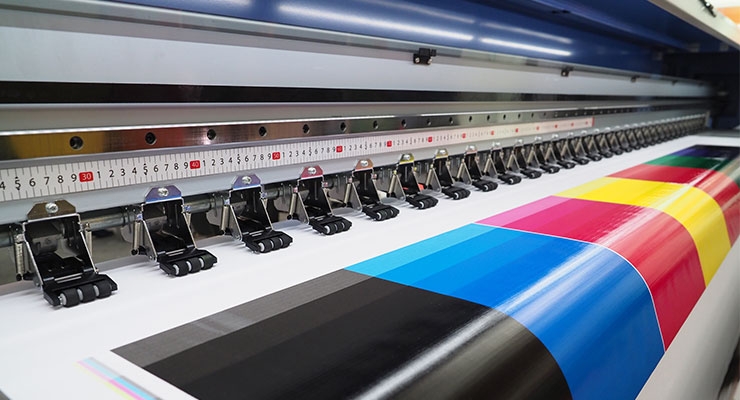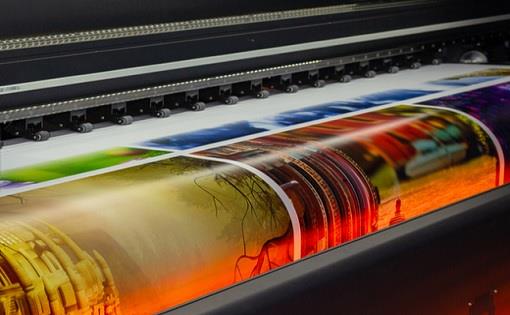What Does Digital Printing Mean?
What Does Digital Printing Mean?
Blog Article
More About Digital Printing
Table of ContentsIndicators on Digital Printing You Need To KnowThe Digital Printing PDFsThe 5-Minute Rule for Digital PrintingOur Digital Printing DiariesThe 20-Second Trick For Digital PrintingSome Known Factual Statements About Digital Printing Excitement About Digital PrintingNot known Factual Statements About Digital Printing
Personalization additionally allows companies to stand apart in a congested market by producing one-of-a-kind marketing materials that separate them from their rivals. Among the major benefits of digital printing is the ability to publish variable information. Each printed piece can be one-of-a-kind, permitting organizations to produce customized advertising products that talk directly to their target market.Digital printing likewise permits for personalization in the design of advertising and marketing materials (Digital Printing). With digital printing, businesses can develop designs that are special and customized to their specific requirements.
Getting The Digital Printing To Work
This benefits organizations that intend to examine various advertising and marketing techniques or release new services and products. By printing smaller quantities of marketing materials, companies can minimize waste and avoid the demand for excess stock. Digital printing is likewise functional. It can publish on different products, including paper, cardstock, plastic, and metal.
By making use of different products and layouts, services can produce unique marketing materials that stick out from their rivals and attract focus from their target market. Digital printing likewise provides uniformity. With conventional printing techniques, there is often variant between prints as a result of distinctions in ink insurance coverage, stress, and various other aspects.
This consistency can help develop customer trust and trustworthiness, revealing that business is committed to offering high-quality products. Uniformity is especially crucial for organizations that intend to build consumer trust and integrity. By making sure that every print corresponds, services can show that they are committed to providing top notch materials and taking notice of the details.
A Biased View of Digital Printing

Furthermore, electronic printing creates less waste since it can print as needed and in smaller amounts, minimizing the demand for excess inventory and materials. Digital printing likewise uses less power contrasted to traditional printing methods. Digital printers do not call for as much power to operate, as they do not require to warm up as much or utilize as much power to run.
More About Digital Printing

Countered printing calls for a plate for every color printed. Typical offset printing is a print approach that uses light weight aluminum plates to transfer ink onto a rubber sheet (often described as a "covering"). The picture is then rolled onto the printing surface area. This printing method is taken into consideration "countered" due to the fact that the ink is not moved to the paper directly.
Digital Printing Can Be Fun For Anyone
Countered printing enables Learn More Here for a vast array of print materials to be used throughout production. The top quality photos created via balanced out printing make it the preferred approach, particularly amongst graphic designers, when looking for the biggest shade reproduction, detail, and professional-looking prints.
For digital inkjet printing, ink is moved straight onto the surface. Rather than depending on aluminum plates and rubber blankets to move an image, electronic printing uses liquid ink see this website throughout manufacturing.
A Biased View of Digital Printing
Better color fidelity refers to both the accuracy of the colors and their balance in the style. Due to the image source fact that offset printing can mix customized color inks for each and every job, it will naturally get the colors spot-on. Works equally well on virtually any kind of product. Dependable, exceptional picture quality. Rely on balanced out printing for clean, distinctive kinds and photos without touches or places.
It sets you back a great deal to start an offset work. You need to invest money into creating the plates, which requires time. However, once you have actually spent it, all of the materials prepare to go, and you'll spend less on large balanced out jobs than an electronic print, which has to do with the very same per item despite how large the task gets.
Digital printing is much less costly for low-volume jobs. The cost per device goes down for digital printing, so at some factor, they crisscross. Changing info within a solitary print work.
Digital Printing - An Overview
While digital printing or inkjet printing is the preferred selection in the existing times, there are engaging factors to convert from countered to electronic printing systems. When publishing balanced out or digitally, vital decisions and procedures are entailed in color matching.
Industrial inkjet printing uses versatility for printing on many various substrates. Digital printing is suitable for customers who do not need longer runs and warehousing materials.

One benefit of electronic printing is picking from a wide variety of electronic substratums. With electronic printing, the price of the substrate in the overall job is minuscule.
The Definitive Guide to Digital Printing
drop-on-demand is the second printing technology to consider. Continual inkjet systems require considerable maintenance, even more driver training, and higher downtime. Tools expenses in inkjet printing are far reduced than offset printing as there are no plate-making, plates, and press costs. Past the funding expense, the prepress tools and printing machine need highly skilled drivers in offset printing, which adds labor expenses.
Report this page